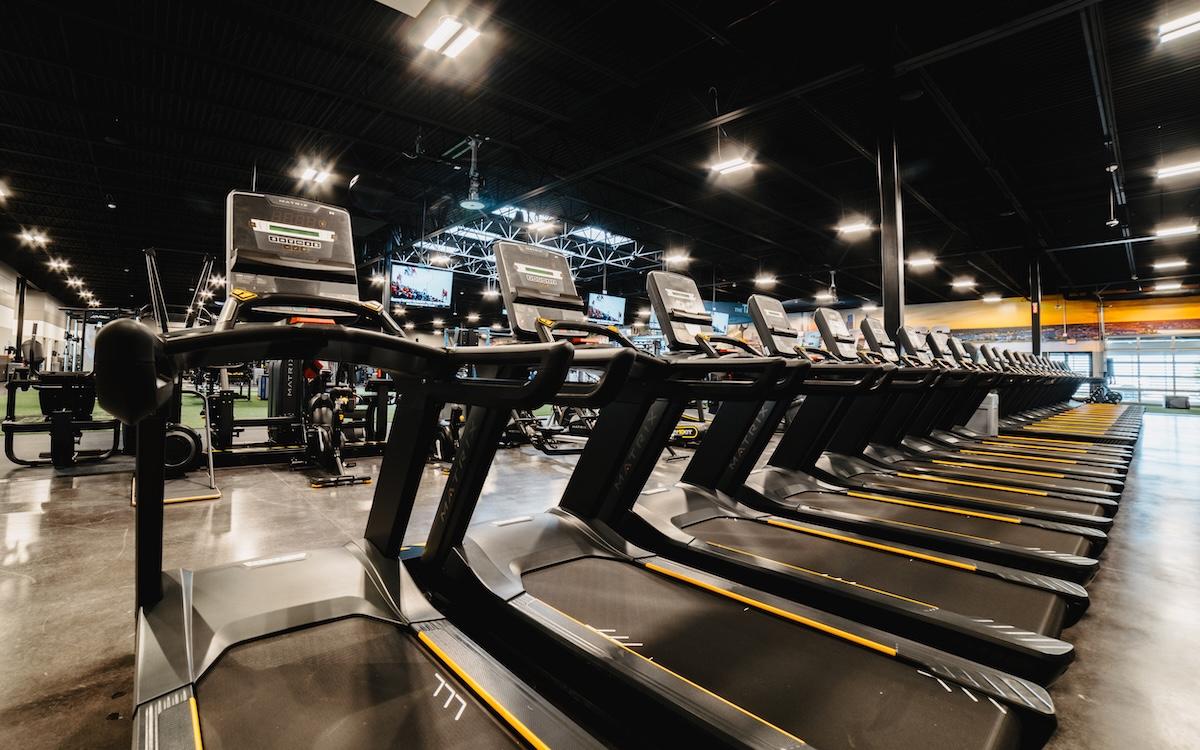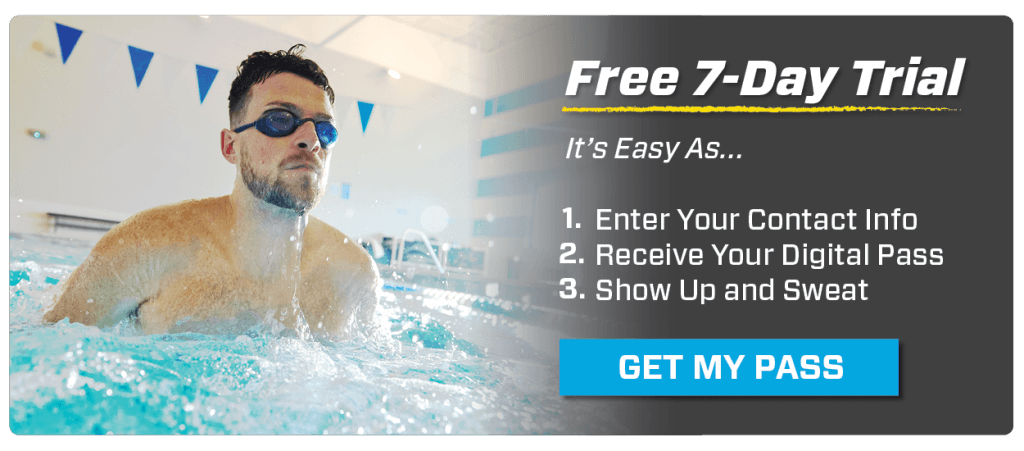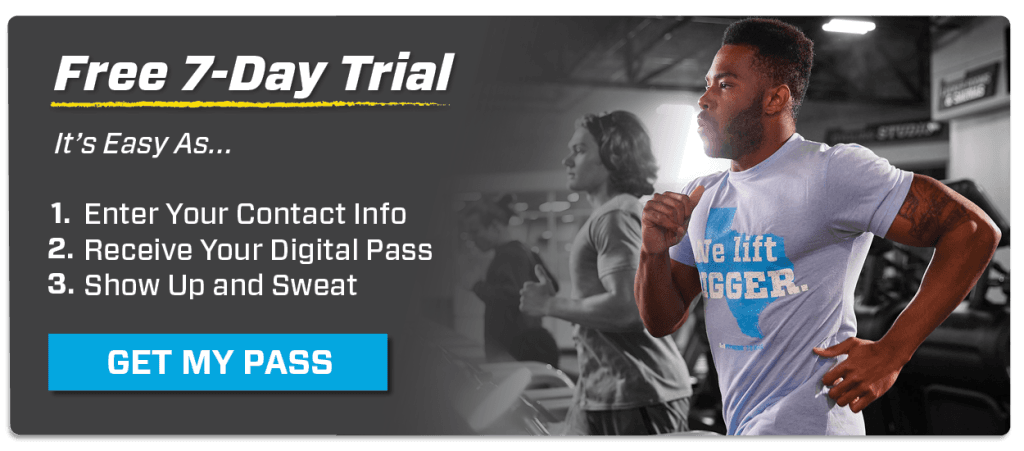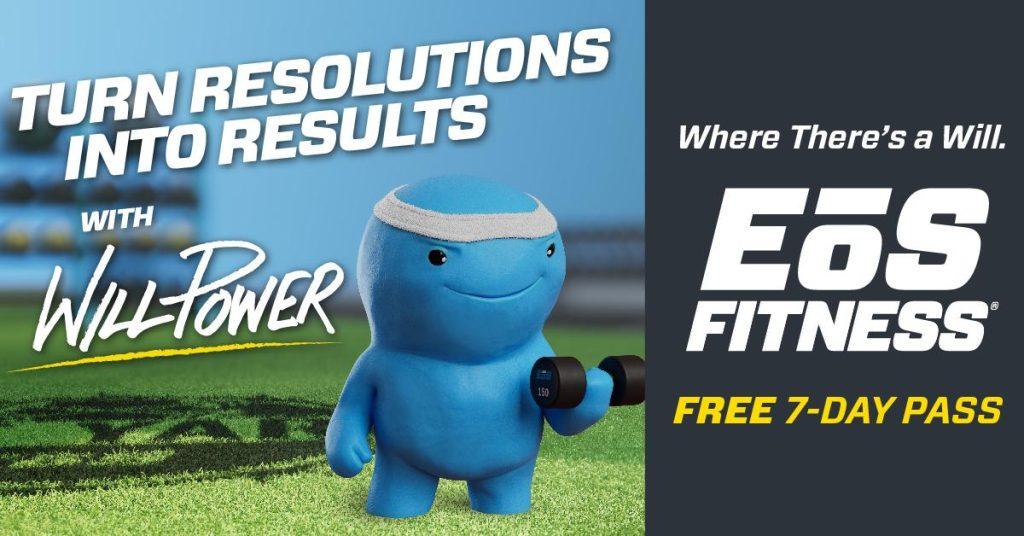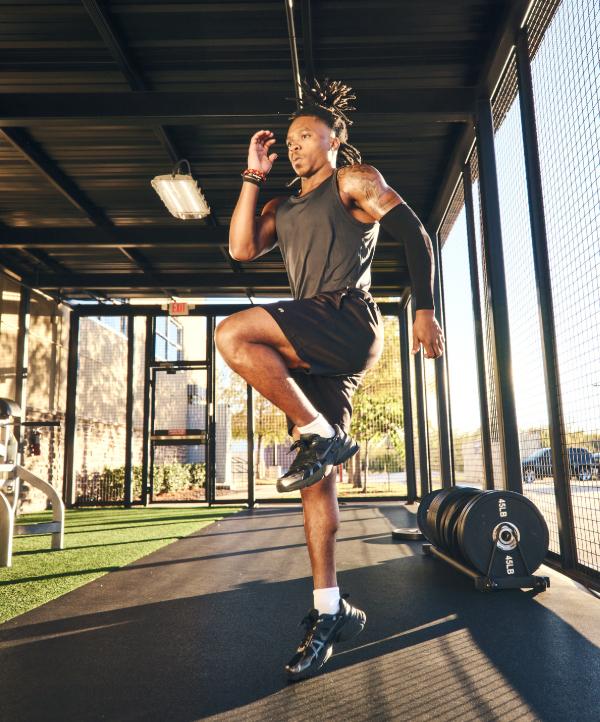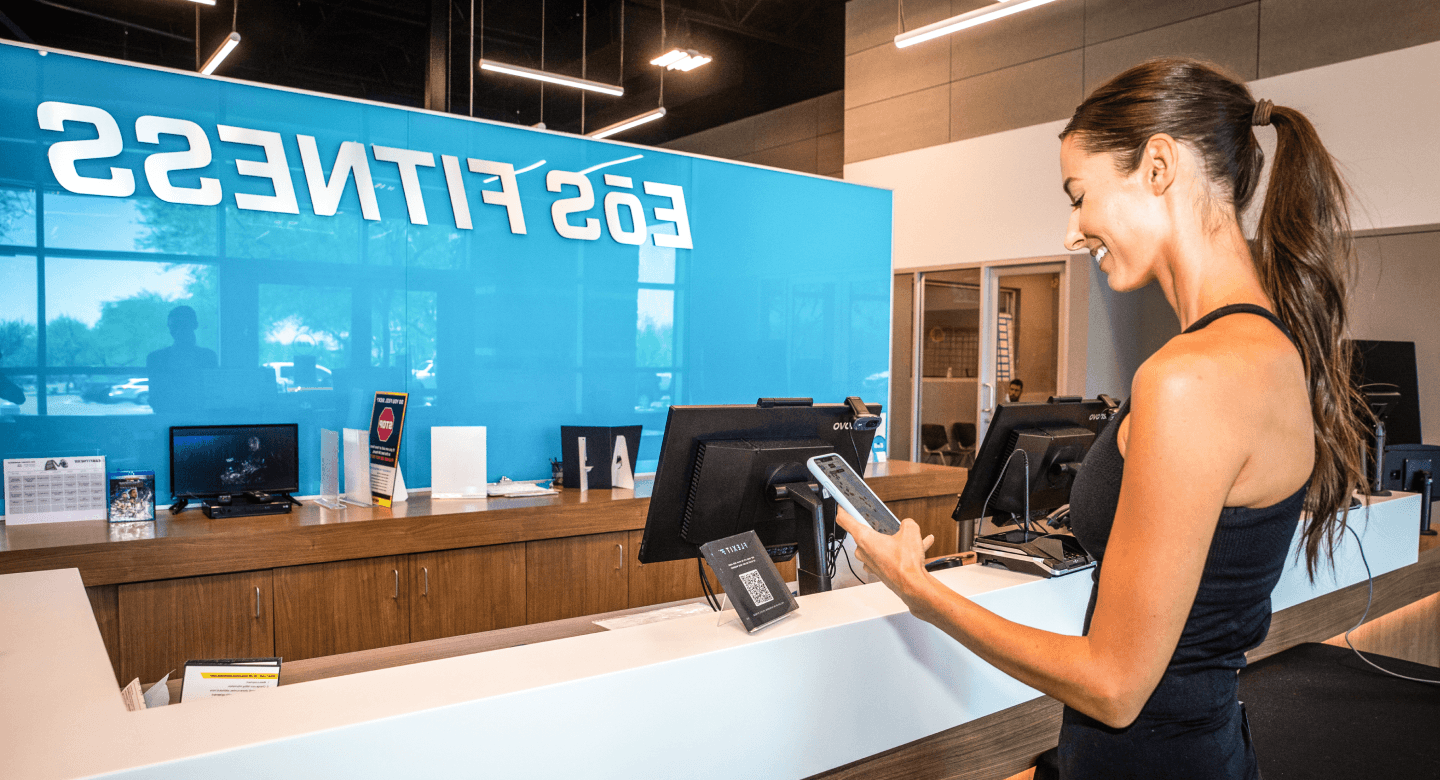HOW TO TRAIN FOR A TRIATHLON AT THE GYM: SWIM, BIKE AND RUN YOUR WAY TO THE FINISH LINE
Fitness Tips
Jun 09, 2025 • 9min read
Training for a triathlon is no small feat—but you don’t need open water, winding roads or perfect weather to get race-day ready. Whether you’re dealing with unpredictable weather, limited pool access or a packed schedule, the gym can be your all-in-one triathlon training ground. Using cardio machines and structured routines, you can simulate race conditions, improve endurance and develop the power you’ll need to cross that finish line. This guide breaks down how to train for all three segments—swim, bike and run—using the equipment and amenities available at most gyms, giving you a game plan to follow and confidence to race.
What You Will Learn
Estimated Reading Time: 9 minutes
TRIATHLON TRAINING AT THE GYM—IS IT EFFECTIVE?
Yes, triathlon training at the gym is effective and offers several key advantages for consistency, progress tracking and convenience. Here’s why gym-based triathlon preparation works:
- Controlled conditions mean you can train year-round without worrying about weather or terrain
- Access to cardio machines allows you to mimic real race conditions
- Consistency and scheduling help busy athletes stay on track
- Beginner-friendly and efficient for those new to triathlons or returning to the sport
TIPS FOR FIRST-TIME TRIATHLETES TRAINING INDOORS
Starting your indoor triathlon plan? The gym is excellent for building stamina, strength and confidence, especially when starting your triathlon training journey. Here are a few tips to train smarter, stay safe and make steady progress:
- Warm-up and cool down: Do this every session to protect your muscles and reduce the risk of injury.
- Track your stats: Use a smartwatch or gym app to monitor heart rate, pace and distance so you can adjust your training as needed.
- Hydrate consistently: Just because you’re indoors doesn’t mean you’re not sweating—drink water before, during and after workouts.
- Pack the right gear: Towel, water bottle, clean clothes and any accessories that keep you comfortable and focused.
- Progress gradually: Start with shorter sessions and slowly increase time and intensity each week to avoid overtraining.
SWIM TRAINING AT THE GYM: WITH OR WITHOUT A POOL

Swimming is often the trickiest leg of a triathlon to train for, especially if you don’t have regular access to open water or a lap pool. But don’t sweat it. Whether your gym has a pool or not, there are effective ways to build the endurance, upper-body strength and breath control needed for race day. The key is simulating swim mechanics and conditioning with the right mix of exercises and equipment. Here’s how to make it work:
If You Have Access to a Pool
Take full advantage of pool time by turning your laps into structured, race-ready workouts:
- Lap swimming: Focus on continuous swim sets to mimic open water endurance and refine your technique.
- Interval sets: Alternate fast laps with recovery laps to build speed and stamina.
- Drills for efficiency: Incorporate kickboard laps, pull buoy sets and breath control drills to improve body position and stroke strength.
- Track your progress: Use waterproof smartwatches or a simple logbook to monitor distance, pace and stroke count.
- Cross-train in the water: Mix in water-based G-Fit Classes to add resistance, challenge coordination and boost upper-body power.
If You Don’t Have Access to a Pool
No pool? No problem. You can still train like a swimmer by targeting the same muscles and energy systems:
- Rowing machine: Use for sustained cardio and upper-body endurance—try intervals to simulate swim effort.
- Cable machines and resistance bands: Focus on lat pulldowns, shoulder extensions and flys to condition your back, shoulders and core.
- Incline treadmill walks with upper-body circuits: Combine cardio and strength by alternating incline walking with push-ups, planks or battle ropes.
- Core-focused bodyweight training: Moves like flutter kicks, superman holds and breath-control exercises improve hydrodynamics and lung capacity, essential for triathlon swim training without a pool.
INDOOR CYCLING FOR THE WIN
Cycling is the longest segment in most triathlons and crucial to your overall race performance. Training indoors gives you precise control over resistance, cadence and duration, perfect for building the stamina and strength needed for race day. Whether you’re hopping into a G-Fit Indoor Cycling Class or programming your ride, here’s how to make every pedal stroke count:
Power and Cadence on the Stationary Bike
- Choose the right bike: Use a spin bike for a more realistic road feel or an upright bike for a more relaxed ride. If your gym has power-meter bikes, even better
- Train with purpose: Alternate between endurance rides (longer sessions at a steady pace) and interval training (short bursts of high-intensity effort followed by recovery periods) to simulate sprint and sustained race segments.
- Focus on RPM and resistance: RPM (revolutions per minute) helps you track cadence—aim for 80–100 RPM on flat terrain and 60–80 RPM when climbing. Adjust resistance to mimic race day elevation changes
- Track your progress: Use built-in bike monitors or connect a fitness app to log time, distance, wattage and heart rate. These metrics give you a clear picture of improvements and help with pacing strategy.
- Incorporate strength training: Pair your ride days with triathlon strength training—especially weight lifting for triathletes focused on legs and glutes to build cycling power and endurance.
- Join a G-Fit Indoor Cycling Class: These group workouts provide structure, motivation and energy, offering a real-race vibe that keeps you pushing to the finish line. Expect coach-led intervals, music-driven intensity and a full-body burn.
BUILD RUNNING ENDURANCE ON THE TREADMILL

The final leg of the triathlon, the run, is where mental toughness and endurance shine. Training on a treadmill offers the consistency and control needed to fine-tune your pace, build stamina and simulate race conditions without dealing with unpredictable weather or terrain.
Strategies for Effective Indoor Runs
- Use incline settings to mimic outdoor terrain: Running at a 1 to 3 percent incline challenges your muscles and prepares you for elevation changes on race day.
- Practice pacing and negative splits: Begin your run at a steady pace and gradually increase your speed in the second half to teach your body how to finish strong.
- Add variety with agility drills: Incorporate walking lunges, side shuffles or quick sprint bursts to boost muscular endurance and keep workouts engaging.
- Track key metrics: Use the treadmill’s built-in data or connect a smartwatch to monitor cadence, heart rate and stride length. These numbers help you improve efficiency over time.
- Include upper-body strength training: Add exercises that strengthen your core, shoulders and back to support posture and endurance during longer runs.
ALTERNATIVE MACHINES FOR CROSS-TRAINING
Cross-training plays a key role in any well-rounded triathlon plan. It helps reduce injury risk, prevents burnout and improves overall athletic performance. When you rotate to other cardio machines, you give your body a break from repetitive motion while still building stamina and strength. Here are a few gym favorites that support triathlon success:
- Elliptical machine: A great low-impact option for recovery or active rest days. It improves cardiovascular endurance while protecting your joints. Use interval settings to keep the workout challenging and efficient.
Ideal for: Building endurance without additional stress on knees or hips. - Stair climber: This exercise targets the glutes, quads and calves, which are essential muscles for both the bike and run segments. It focuses on steady pacing or short bursts to simulate hill climbs.
Ideal for: Lower-body strength and improved climbing power. - Rowing machine: Engages the entire body, balancing out leg-heavy cycling and running with upper-body endurance. Rowing also reinforces core stability and breath control.
Ideal for: Total-body conditioning and enhanced swim simulation. - Air bike or SkiErg®: These full-body machines combine cardio and strength, making them excellent additions to your weekly training plan. Use them for high-intensity bursts or steady-state work.
Ideal for: Boosting aerobic capacity and muscular endurance.
SIMULATE RACE DAY INDOORS
One of the best ways to test your progress and build confidence is to simulate race day inside the gym. A mini-indoor triathlon helps you practice pacing, transitions and mental focus without ever leaving your training space. It’s also a great way to break up your routine and track how your endurance is improving over time.
- Choose your machines: Use the rowing machine to stand in for the swim, a stationary or spin bike for cycling and the treadmill for the run. This combination targets the same energy systems and muscle groups used in a real race.
- Set your race pace: Determine a goal pace for each segment and aim to maintain it throughout. This gives you a chance to test how your body handles sustained effort at your desired race intensity.
- Practice quick transitions: Move from one machine to the next with as little downtime as possible to simulate the fast pace of triathlon transitions. Lay out your gear beforehand and have water and a towel ready, but be mindful not to disrupt surrounding members during your setup and transitions.
- Log your results: Use your fitness tracker or a notepad to record your time, pace and how you felt during each segment. Over time, this data helps you refine your triathlon gym workout strategy.
SAMPLE INDOOR TRIATHLON TRAINING PLAN
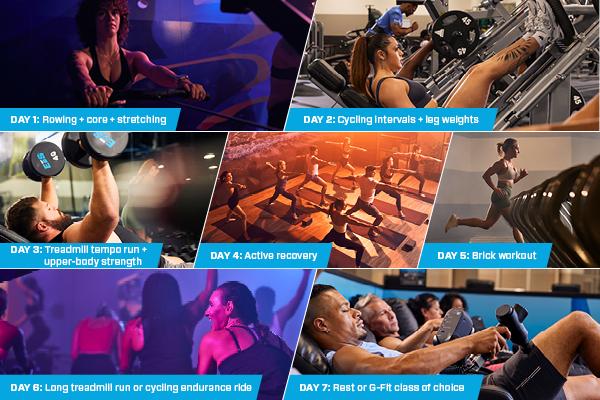
Training for a triathlon indoors takes strategy, variety and recovery. This weekly plan mixes cardio, strength and cross-training to help you build endurance, power and resilience using gym equipment.
Weekly Schedule for Gym-Based Triathlon Prep
- Day 1 – Swim Focus: Rowing machine intervals, core workout and full-body stretching
Goal: Build upper-body endurance and breathing control. - Day 2 – Bike + Strength: Cycling intervals followed by leg-focused weight training
Goal: Improve cycling power and leg strength. - Day 3 – Run + Upper Body: Treadmill tempo run paired with upper-body lifting for triathletes
Goal: Boost running stamina and balance muscle development. - Day 4 – Active Recovery: Light elliptical workout, yoga or a G-Fit class
Goal: Promote recovery and mobility without losing momentum. - Day 5 – Brick Workout: 30 minutes of cycling immediately followed by 15–20 minutes of treadmill running
Goal: Practice transitions and race-day pacing. - Day 6 – Endurance Day: Long treadmill run or extended bike session at moderate intensity
Goal: Build sustained endurance for race distance. - Day 7 – Rest or G-Fit Class: Take a full rest day or choose a low-impact class to stay moving
Goal: Let your body recover while staying flexible with your routine.
CONCLUSION: YOUR GYM IS YOUR TRIATHLON PLAYGROUND
You don’t need oceans, trails or open roads to prepare for a triathlon. With the right plan and the right tools, your gym can be the perfect training ground. Everything you need to succeed is already within reach, including cardio machines that simulate race-day intensity to G-Fit classes that keep your energy high. Indoor workouts offer consistency, convenience and results, making triathlon prep possible no matter your schedule or experience level. Ready to turn your fitness goals into finish-line moments?
